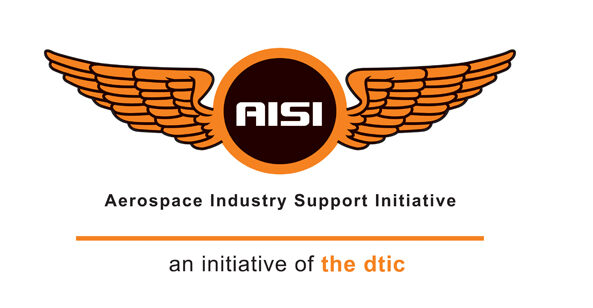Potchefstroom-based research and development company OnTrack Technologies is one of the recipients of Aerospace Industry Support Initiative (AISI) funding, and has used this to develop skills amongst the youth through vibration-less engine and sailplane development.
OnTrack Technologies has been the preferred research and development supplier to Jonker Sailplanes since 2005. The AISI has provided funding for two Jonker Sailplanes projects: development of the new JS5 glider, and a near-vibration-less aircraft engine.
The projects are part of OnTrack’s collaboration with the Council for Scientific and Industrial Research (CSIR)-hosted AISI to support research and development initiatives in the aerospace sector. According to OnTrack, the intervention has engaged and nurtured young engineers in key projects, fostering professional growth while making significant advancements.
Jonker Sailplanes is working on several new gliders, including the JS4 Rengeti 15-18 metre wingspan glider, which will be available from 2025 as a regular glider or with a TJ-42 jet sustainer or Solo Aircraft Engines electric sustainer/self-launch system. The company has also developed the new JS5 Rey glider with a large 24 metre wingspan – this flew for the first time in November. OnTrack Technologies assisted with JS5 development, driven by a team of five newly graduated engineers.
The glider’s development aimed to push the boundaries of aerodynamics, materials and manufacturing techniques. The involvement of young engineers showcased their technical skills and allowed them to gain invaluable hands-on experience in a cutting-edge aerospace venture.
The project served as a platform for these engineers to enhance knowledge and expertise, establishing a strong foundation for their future careers, OnTrack Technologies said.
The second AISI-supported project undertaken by OnTrack Technologies focuses on development of a near vibration-less aircraft engine. It is led by two young engineers who serve as lead design and project engineers. The objective was to design an engine with significantly reduced vibrations, which has implications for various aerospace applications.
Jonker Sailplanes offers to equip its gliders with either a small 42 kg thrust TJ-42 jet engine for sustained flight, an electric motor for sustained flight or self-launch, or a 625 cc Solo two-stroke-engine. The Solo 2625 engine gives a self-launch capability with its retractable propeller and offers the high power to weight ratio needed for glider applications.
However, the two-cylinder engine suffers high levels of vibration – a problem inherent with many two-stroke designs – which causes many failures, including exhaust cracks, wiring failures, mechanical failures, fastener failures etc. This resulted in a mean time between failure of around one hour due to vibration, Jonker Sailplanes CEO Uys Jonker told a recent Aeronautical Society of South Africa conference.
The solution was to develop crankshaft counterweights and primary and secondary balancing shafts – these almost completely eliminated vibrations, Jonker said, adding that a new oil pump was added to cool the bottom of the engine and lubricate the gearbox. Solo was so impressed by the changes – which only added 4 kg to engine weight – that it is using the OnTrack design and paying the necessary royalties. Jonker in July said a second round of engine testing is being conducted and then the new design will be ready for production.
“The involvement of young engineers in such a pivotal role highlights the company’s commitment to nurturing talent and entrusting them with critical responsibilities. These engineers not only contribute their technical acumen but also gain exposure to complex engineering challenges and develop leadership skills,” OnTrack Technologies said.
“In addition to the developmental benefits for young engineers, the successful completion and full production of the Jonker Sailplanes JS5 open-class glider and the near-vibrationless engine projects have a significant impact on job creation, providing opportunities for other talented individuals in the youth demographic. As these projects move towards commercialization, the increased demand for these cutting-edge products necessitates the expansion of manufacturing facilities and the establishment of supply chains. This expansion not only creates job opportunities for engineers, technicians, and manufacturing specialists but also opens avenues for apprenticeships and internships, allowing aspiring youth to gain practical experience and contribute to the growth of the aerospace industry. OnTrack Technologies’ commitment to youth development extends beyond its project teams and permeates the broader workforce, fostering economic empowerment and driving innovation in the aerospace sector,” OnTrack Technologies said.
“OnTrack Technologies’ partnership with the CSIR serves as a model for leveraging collaborative efforts between academia and industry to empower and advance the youth in the field of aerospace engineering,” OnTrack Technologies concluded.
The Aerospace Industry Support Initiative was established in 2006 by the Department of Trade and Industry, as it then was – now the Department of Trade, Industry and Competition (the dtic) – to promote the capabilities, competitiveness and interests of the South African aerospace industry as well as partnerships between government, industry and academia, both locally and abroad. Particular focus areas include composite materials, titanium processing and manufacturing, avionics and certification to international standards while providing global market exposure to companies.
The AISI is hosted by the CSIR and is fully government funded. Through the dtic, AISI provides funding and support to more than 150 aerospace organisations. The AISI has supported a number of projects, such as Kutleng Dynamic Electronic Systems’ smart camera for UAV and other use; flutter analysis on Jonker Sailplanes gliders; additive manufacturing for satellite applications (LambdaG); industrialising aluminium casting technology developed at the University of Johannesburg for the production of aircraft engines (for ADEPT Airmotive); the design and development of a medium altitude, long endurance (MALE) UAV for commercial applications (Sentian Aerospace); and industrialisation of a 40kg Cape Aerospace Technologies micro gas turbine engine.
By:Guy Martin
Published by defenceWeb

